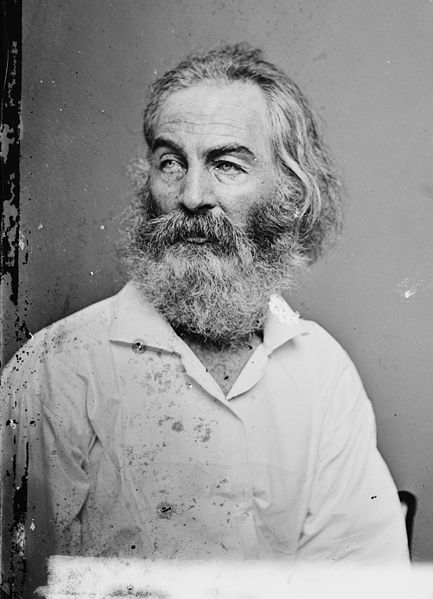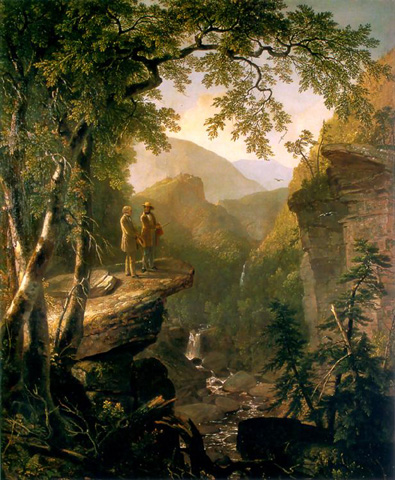Whitman's poetic vision came at a time, in 1855, of relative optimism and a collective sense of progress in the United States. This sense of optimism and divine purpose is reflected in much of the paintings of the time, in the so called Hudson River School, with its majestic lanscapes and pastoral scenes. In the early half of the nineteenth-century, the American artists looked west and sensed the country was moving towards a promised land.
From the 1850’s, the promise of America, in certain respects, would dim. Its contradictions – notably the ideal of freedom and the instituion of slavery – would tear the country apart in a prolonged, bloody Civil War. Industrialization and the masses of migrant labor would create the labor strife that had already formed in Europe. And the frontier, with its range wars and internment of the Indians, would begin to shut down. Whitman, living well into the excesses of the Gilded Age, would see this promise dim yet held fast to his vision, in some respects strengthened by his close proximity to the dying youth of the Civil War.
As related in the previous blog of May 24, the fact that these artists may reflect the prejudices of their times, is not reason to be dismissive of their artistic vision. From our vantage point in the twenty-first century, it may well seem clear that this sense of divine purpose came inextricably tied to the evils in the rationale of manifest destiny, for example. But that is not sufficient reason to render the vision irredeemable. History will run its course and address these contradictions. There is something in these artists that are both endemic and transcendent of their times. Whitman carries the disease that will afflict the subsequent American -- but through him I believe we can also discover its cure.
One such contradiction we must contend with today is the ideal of individual freedom and the reality of environmental degradation. To address this, I argue in part for greater merging of the mainstream American culture with its indigenous culture. Whitman's vision should be balanced against Black Elk's vision, as related in the blog of May 25. Time will pass and places change; but the biology that enabled the early nineteenth-century artist to sense and create in such a way, remains with us in our own time and place. But we'll have to achieve it honestly.
Friday, June 11, 2010
Subscribe to:
Post Comments (Atom)














No comments:
Post a Comment